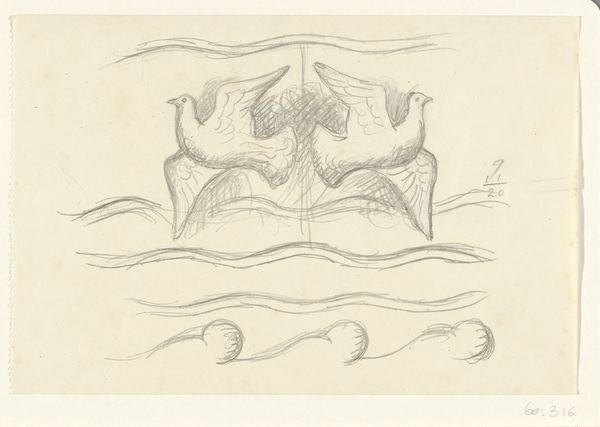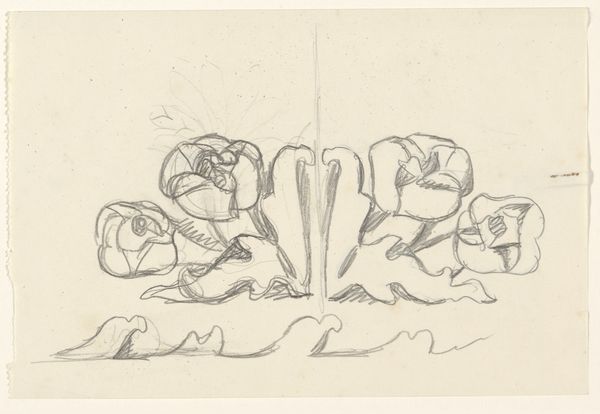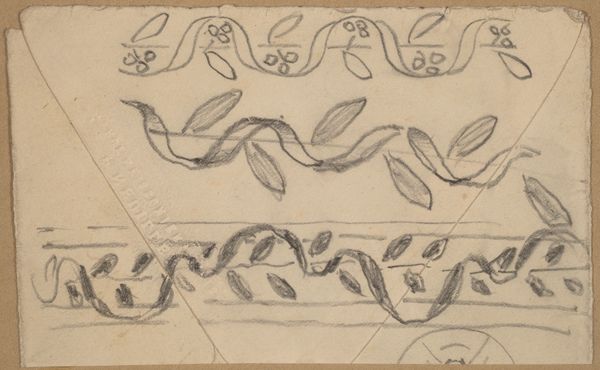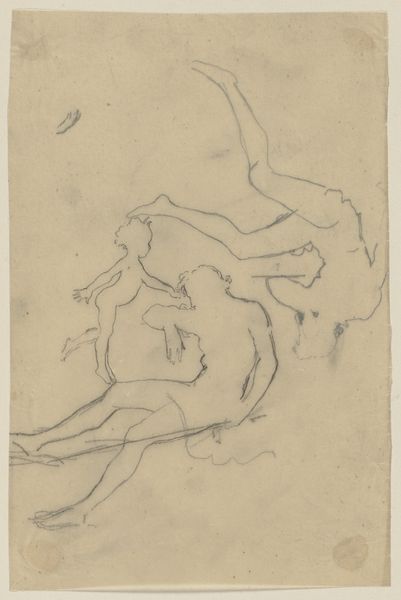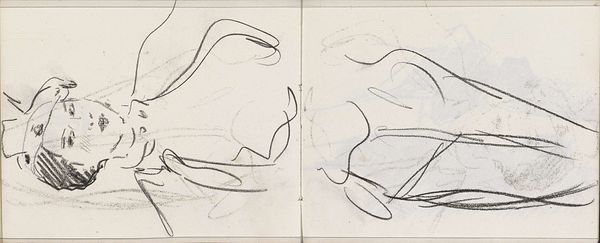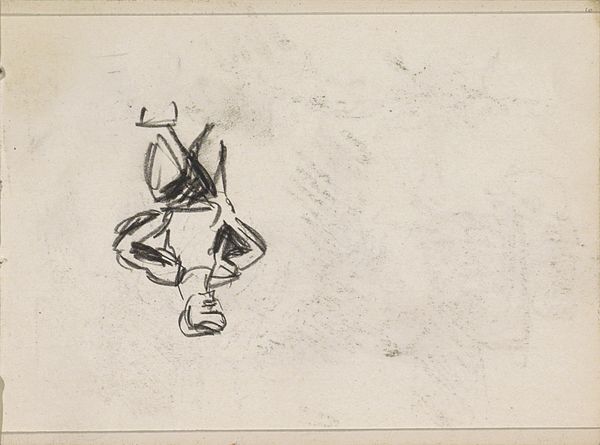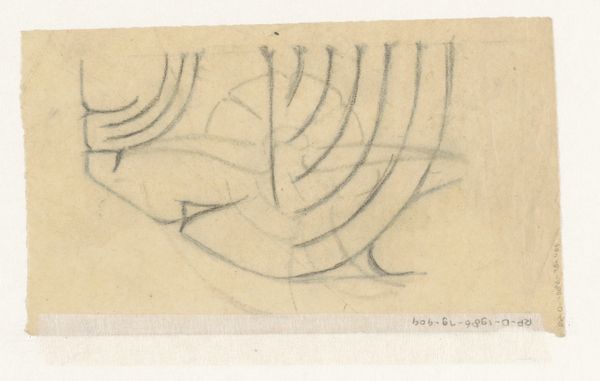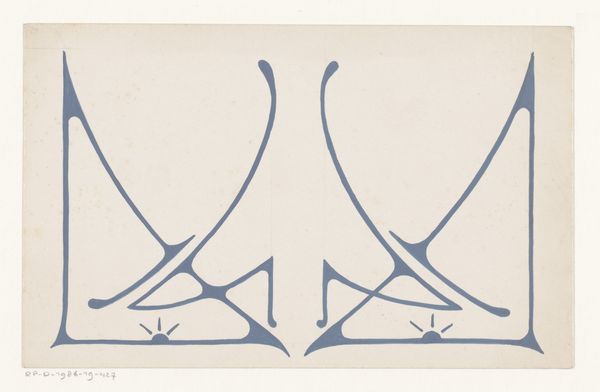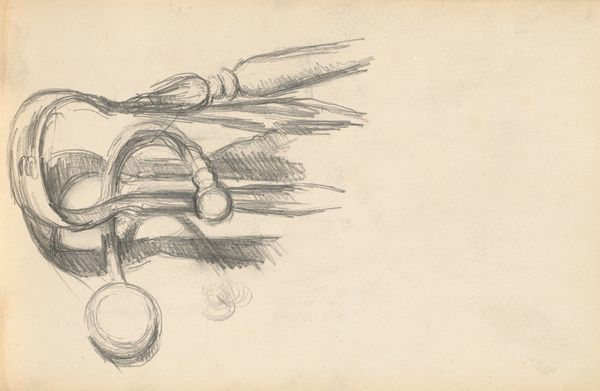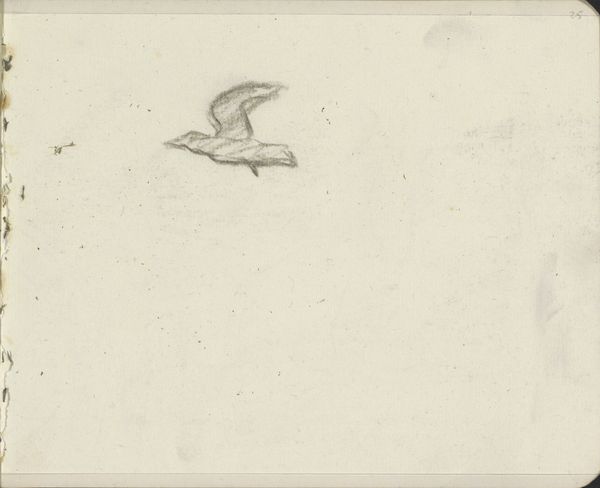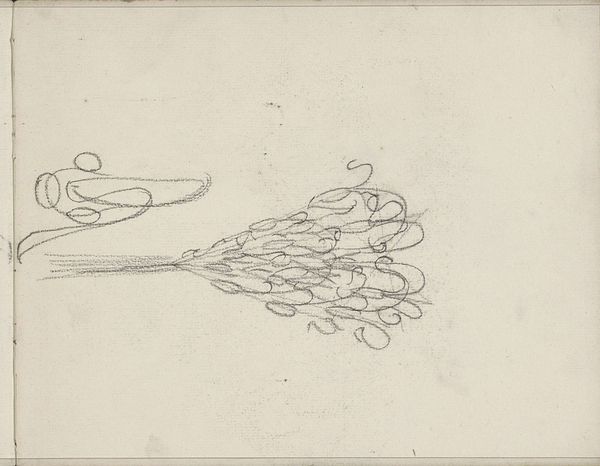
drawing, paper, pencil
#
drawing
#
pen sketch
#
landscape
#
figuration
#
paper
#
pencil
Dimensions: height 135 mm, width 202 mm
Copyright: Rijks Museum: Open Domain
Curator: Let’s turn our attention to Leo Gestel’s “Two Flying Doves Above the Sea,” created between 1939 and 1941. What are your initial impressions? Editor: The sketch feels both peaceful and fragile. The delicate pencil lines give the birds and the sea a light, airy quality. The repetition almost evokes the wallpaper. It feels quiet. Curator: Given the historical context, those impressions become all the more poignant. Gestel created this drawing during a very dark period – the Nazi occupation of the Netherlands. This context really shifts the image of these doves, doesn’t it? What about those soft clouds resembling waves? It almost makes me think of the ebb and flow of resistance against fascism. Editor: I'm drawn to how simple the materials are: just pencil on paper. The rawness of the technique also reflects the conditions in which it was made, it's more a concept study. There is something about its accessible quality that resonates strongly and the ocean waves have a simple repetition of materials. Curator: Absolutely, and the deliberate use of these universally recognized symbols—doves as representations of hope and freedom—imbues the drawing with a sense of yearning. The way Gestel presents these figures offers commentary on how individuals and entire populations held onto these ideals, or were deprived of them. Gestel, in being Jewish, suffered profoundly from antisemitism. The positioning of the two doves facing each other can, thus, represent longing. Editor: It’s a humble object. The simplicity of it brings an immediacy of Gestel's concept to life. It makes me wonder what sort of a broader series he was creating these pen and pencil strokes. This accessible work invites us to explore these meanings. It's art stripped bare, highlighting his practice, and Gestel's creative mind, I would guess, for planning and drafting something. Curator: Ultimately, viewing "Two Flying Doves Above the Sea" in our current times encourages reflections of collective struggle for emancipation, even now. It speaks of the vital necessity to embrace hope, equality, and justice. Editor: The process here speaks volumes. Seeing the artwork created from base-level materials invites a new look into this period.
Comments
No comments
Be the first to comment and join the conversation on the ultimate creative platform.
